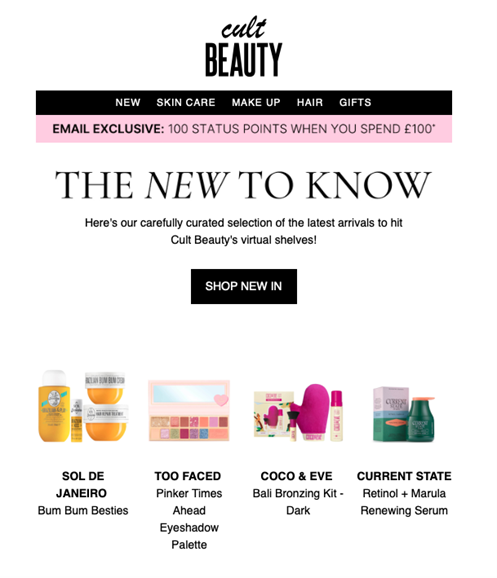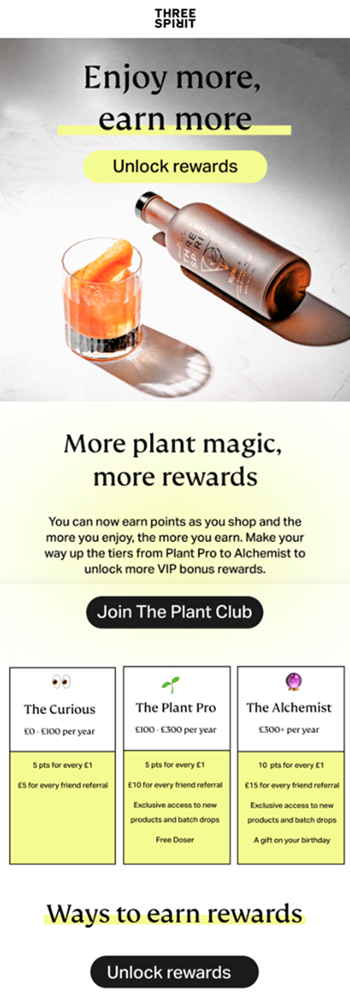The impact of personalization on customer loyalty
Personalisation is a phrase that every marketer is all too familiar with.
But far from being a buzzword, personalisation has been proven to have a significant impact on customer loyalty. And businesses who invest in personalised experiences are benefitting from repeat purchases, customer loyalty, and brand advocacy.
In this post I will cover how and why personalisation impacts customer loyalty. And offer actionable advice so you can implement personalisation tactics to keep your customers happy, engaged, and shopping.
The impact of personalisation
Let’s begin by directly identifying the impact that personalisation has on customer loyalty.
Statistics tell a positive story.
For instance, according to a study by Epsilon, 80% of consumers are more likely to purchase from a brand that offers them personalised shopping experiences. And another study by Infosys found that 74% of customers even feel frustrated when website content is not personalised, and 59% of consumers reporting that personalisation directly influences their shopping decisions.
These statistics clearly highlight the significant impact that personalisation has on customer loyalty, and the importance of incorporating personalised experiences into a business' customer retention strategy.
The psychology of personalisation
But why does personalisation have such a dramatic impact on consumers’ buying habits?
Personalisation and customer loyalty can be understood in the context of psychology, notably the following theories:
The Seven Principles of Persuasion
Let’s begin with Cialdini's seven principles of persuasion: reciprocation, commitment and consistency, social proof, liking, authority, scarcity, and unity.
When used effectively and ethically, these seven principles can be implemented to guide customers’ behaviour as required.
Taking inspiration from Cialdini, marketers should focus on combining personalised promotions, relevant advice, and a sense of community to successfully encourage customers to remain loyal and purchasing.
The Power of Habit
In his book "The Power of Habit," Charles Duhigg argues that habits are powerful forces that shape our lives and changing them can be transformative.
Duhigg explains how habits can be changed by identifying the cue, routine, and reward that when combined, make up a habit loop.
By tailoring marketing to a customer's preferences and needs, brands can create cues that trigger positive habits, such as purchasing from them or using their services regularly. Over time, these habits can become deeply ingrained, increasing customer loyalty and creating long-term value for the brand.
The Cocktail Party Effect
The Cocktail Party Effect describes an individual’s ability to focus their attention on a specific stimulus, such as a conversation, even in a noisy or crowded environment.
In the context of personalisation and customer loyalty, the cocktail party effect suggests that customers are more likely to pay attention to personalised messaging than generic.
By tailoring marketing to a customer’s specific preferences and needs, brands can filter out marketing clutter and white noise, grab their attention, and make them feel valued. Increasing the likelihood of customer loyalty.
Why aren’t businesses recognising customer loyalty as a priority?
I couldn’t count the number of times I have discussed how retaining customers costs less than acquiring new ones. Yet, I see countless brands failing to prioritise customer loyalty within their marketing and messaging.
Short-term thinking
The prioritisation of short-term profits over long-term customer loyalty is common.
This naturally leads to a focus on transactional marketing, such as discounts or promotions that encourage new customers, rather than relationship-building marketing which focuses on creating valuable experiences for current customers.
Limited resources
Of course, some smaller businesses and startups struggle with limited resources, being forced to focus on new customer acquisition to build their brand and customer base quickly, as opposed to customer retention.
These businesses may also lack the resource and expertise to gather the correct data or invest in automation to generate personalised experiences or execute a robust loyalty program.
Lack of awareness
For many of us, the benefits that loyal customers bring seem obvious.
However, some businesses simply are not aware of the impact customer loyalty can make, or the negative impact customer churn has on their bottom line.
This awareness naturally comes with experience as a business learns from their mistakes, or finds the time to research and take learnings in how to improve their business.
Competition
In highly competitive industries, businesses may feel forced to focus on acquiring new customers over retaining existing ones.
This focus stems from a fear of losing to competitors and leads businesses to prioritise acquisition-focused marketing tactics, such as aggressive pricing or promotions, over loyalty-building tactics.
Personalisation use cases
With a little imagination, the options for successfully using personalisation to increase customer loyalty are endless. However, here are some use cases that can be utilised by almost any business.
Product recommendations
By leveraging data on a customer's previous purchases, behaviour, and preferences, businesses can provide highly personalised product and service recommendations.
Not only does this make customers feel understood and valued, but it also means that your product promotions are truly helpful and more likely to encourage ongoing purchases.

Customised communications
By tailoring communications, such as email, to a customer's interests and preferences, businesses can create a more engaging and relevant experience that keeps customers coming back.
As well as product recommendations, this could be in the form of relevant messaging, imagery, documentation, contact details, or simply their first name.

Loyalty programs
Instead of offering generic rewards, businesses can use data to personalise loyalty incentives to the individual. Therefore creating a far more compelling and relevant loyalty program that drives repeat purchases, customer loyalty, and brand advocacy.

Tailored offers
Offering personalised promotions and discounts based on a customer’s demographics, past purchases, and behaviour can increase their likelihood of returning to the business.
Not only are these promotions genuinely of interest, they can also create a sense of exclusivity and appreciation, making customers feel valued and loyal to the business.

In summary
I see a lot of marketing, both advice and execution, that focuses heavily on personalisation to generate new customers and new sales.
And whilst this is of course important, customer loyalty is undeniably essential for the long-term success of any business.
Loyal customers generate repeat purchases, user generated content, word of mouth sales, and brand advocacy.
So, when implementing any form of personalisation into your marketing, pay special attention to your current customers. Because as we’ve witnessed over the past few years, when times get tough, they may be the ones helping your business to thrive.

 How to resolve AdBlock issue?
How to resolve AdBlock issue? 
 Photo by
Photo by 